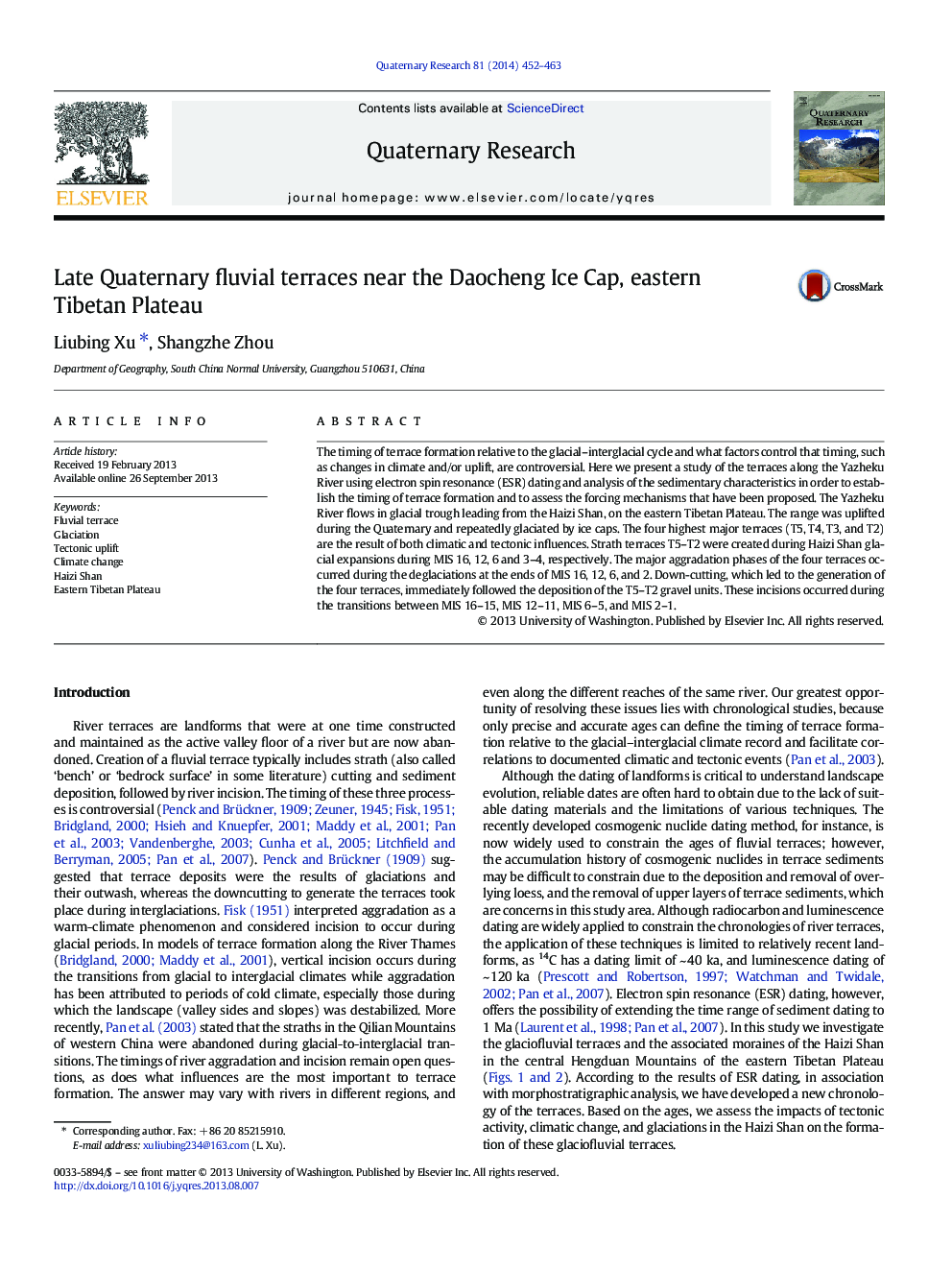| Article ID | Journal | Published Year | Pages | File Type |
|---|---|---|---|---|
| 1045164 | Quaternary Research | 2014 | 12 Pages |
The timing of terrace formation relative to the glacial–interglacial cycle and what factors control that timing, such as changes in climate and/or uplift, are controversial. Here we present a study of the terraces along the Yazheku River using electron spin resonance (ESR) dating and analysis of the sedimentary characteristics in order to establish the timing of terrace formation and to assess the forcing mechanisms that have been proposed. The Yazheku River flows in glacial trough leading from the Haizi Shan, on the eastern Tibetan Plateau. The range was uplifted during the Quaternary and repeatedly glaciated by ice caps. The four highest major terraces (T5, T4, T3, and T2) are the result of both climatic and tectonic influences. Strath terraces T5–T2 were created during Haizi Shan glacial expansions during MIS 16, 12, 6 and 3–4, respectively. The major aggradation phases of the four terraces occurred during the deglaciations at the ends of MIS 16, 12, 6, and 2. Down-cutting, which led to the generation of the four terraces, immediately followed the deposition of the T5–T2 gravel units. These incisions occurred during the transitions between MIS 16–15, MIS 12–11, MIS 6–5, and MIS 2–1.
